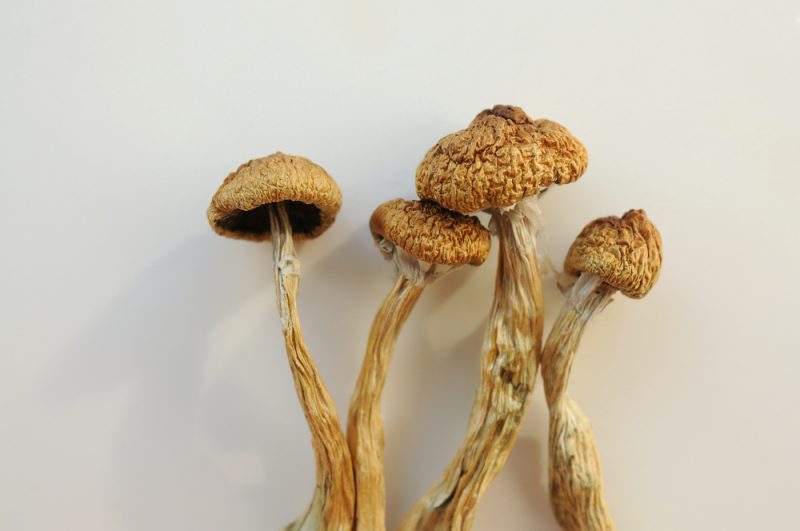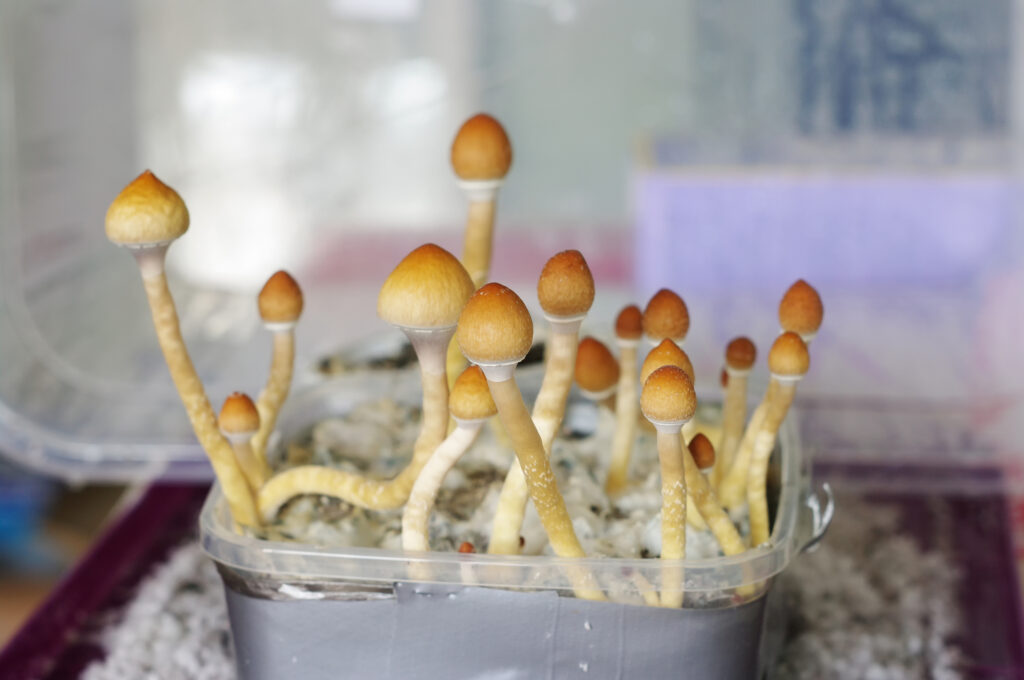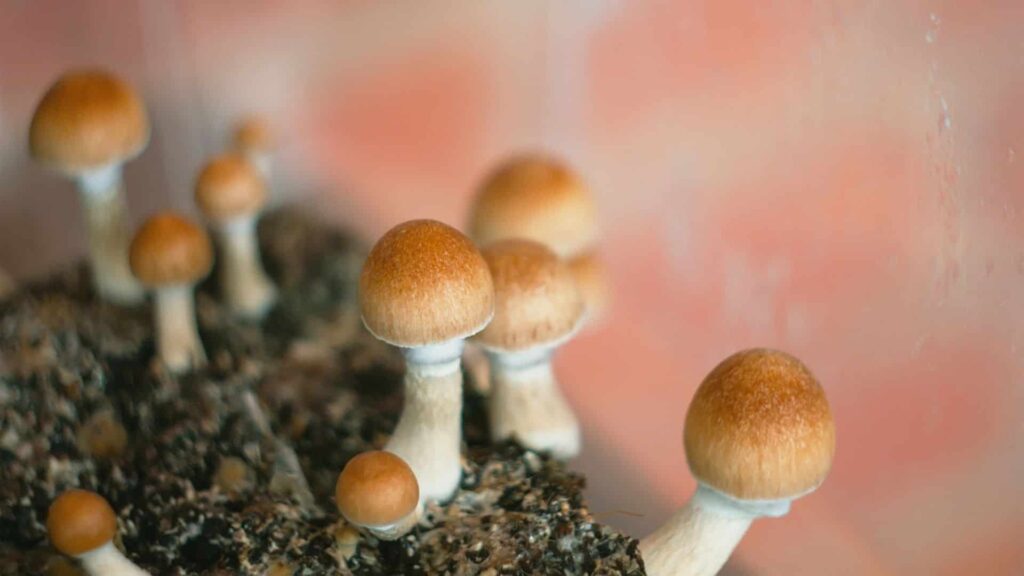Have you ever wondered about the mushroom life cycle and how long it takes to grow magic mushrooms? Whether you use magic mushrooms for research or recreational use, the question can come up either way. Most mushrooms typically grow in a similar time frame, but certain factors can impact their growth cycle. Some factors include the quality of the magic mushroom, the growth cycle time for it, and the yield. Another thing to note is how well the temperature, humidity, and pests were controlled or monitored.

The Difference Between Magic Mushrooms and Regular Mushrooms
It may be obvious to point out that magic mushrooms are significantly different from the portobello mushrooms or lion mane mushrooms that you may pick up at your local grocery or health store. You can pick up a lion’s mane, reishi, or Chaga mushroom for the best mushrooms for brain health. These mushrooms can help protect your brain from cognitive issues, and can help improve your memory, mood, focus, and concentration, and support against Alzheimer’s and dementia.
But how are the best mushrooms for brain health different from magic mushrooms? Well, The reason for this is that the compounds that are found in magic mushrooms are psychoactive and are created naturally. At first glance, mushrooms are small and can have colors ranging from brown and tan to golden beige. The reason why these mushrooms are psychoactive is that they contain a hallucinogen compound, which works by activating serotonin receptors in a person’s prefrontal cortex. This part of the brain can affect people’s mood, cognition, and perception of everyday life. These are the best mushrooms for brain health because of all of the many benefits that can happen.
The Magic Mushroom Anatomy
Let’s examine the different parts of a mushroom and its mushroom anatomy below:
The fruiting body: This part of a mushroom is called the sporophore. This is fleshy and packed with psilocybin. The body of the magic mushroom contains compounds that have psychoactive effects.
The cap: the cap is the uppermost section of any mushroom, giving the fungus a shape of an umbrella. The scientific name for the cap is called “pileus.” It stands on top of the stem and can be flat, curved, or convex. The cap has a different texture than the rest of the body and can come in various colors.
The gills: the gills are where we can find the hallucinogens. Sometimes called a pore, this symmetrical portion sits right below the cap, hanging from its underside. Gills can come in a variety of colors and can have features that make it easier to identify the species, such as purple-brown print.
The stem: the stem is another potent part of a mushroom. It’s long and can also be on the thinner side.
The ring: the ring is just below the cap and protects the gills of a baby fungus. The lid can grow as the mushroom matures, so the cover ruptures. What remains is a thin tissue ring around the stem.
The volva: the volva is part of a mushroom that protects the mushroom when it’s young and a baby. It usually grows at the base of the stem and can break as the shroom stretches out.
Honorable mentions:
The thallus is a really important part of a mushroom. The thallus is what makes magic mushrooms have the ability to continue spreading. It’s made up of two elements, mycelium, and hyphae.
The mycelium is found just below the surface, collecting and providing nutrition to the fruiting body. It’s similar to plant roots that spread inside the soil. It also benefits the surrounding plants, feeding the soil and encouraging a more prosperous microbial life. When the mycelium’s younger, it is called a hyphae. A hypha is tiny thread-like tube that can give the nutrition as it develops.

How Long Does It Take to Grow Mushroom Spores?
All magic mushrooms follow a similar timeline for growth in their mushroom life cycle. Whether it’s golden teacher, amazonian, penis envy, or specialty mushrooms, a typical magic mushroom life cycle can look like this:
Week One: Spore inoculation occurs to later form germination of the mushroom
Week Two: the spore germination is complete. This then leads to cake colonization. Cake colonization is done by placing the germination into mason jars.
Weeks Three to Five: the fruiting cycle begins, which can usually take an additional two weeks. Once the cakes turn blue and spores release, the mushroom fruiting cycle is complete.
The entire process can take 4 to 6 weeks, from the inoculation to the eventual fruiting of the mushroom.

Factors that Impact How the Mushroom Life Cycle
There are a couple of factors that can determine just how long a mushroom can grow. Typically, popular growing matter for magic mushrooms is brown rice, coconut husks, or oats. It’s crucial to ensure the growing matter contains no other microorganisms that can impact its growth. If you have proper sterilization of all equipment and substrates, then any mushroom spores need to thrive and prosper during their growth time period. During the early days of growing mushrooms is when you should check on their temperature and humidity levels daily. After inoculation, the ideal temperature for the next four weeks is about 27 degrees Celsius. In about a month, the cakes are created, you can move them into chambers, where they can grow more and eventually fruit. After sprouting, mushrooms are usually ready to harvest in a week or two.
Making magic mushrooms at home can seem like a complex process, but the results can produce an incredible compound that’s perfect for recreational or non-recreational use. Knowing the different parts of a mushroom and mushroom anatomy can help you identify species in the wild and maybe even spark you to have microscopy efforts. The mushroom life cycle is a great topic to explore. Visit Top Mushroom Spores today to continue exploring different psilocybin mushrooms and to buy high-quality spores to grow at home! If you buy them, you can ensure that they are high quality.